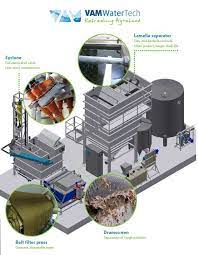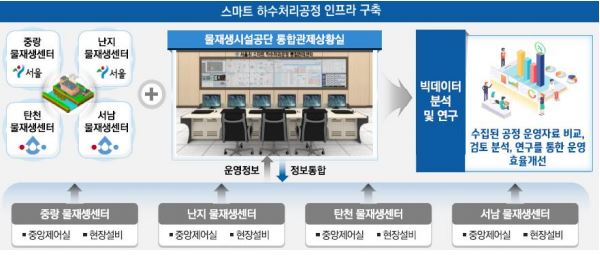Subject:Increase water recycling and safe reuse
Technological module: AI
A. Exploratory research
I. Dropcountr
Project Carrier:
Robb Barnitt
Beneficiaries:
For those who want to digitalize their utility and collect data to increase water recycling and avoid water waste.
Users:
People who want to understand where water is being used in their household;
Commercial customers who want to collect data and provide better services to their clients.
Need:
Improve the efficiency of water utility and recycling.
Principle:
- A dashboard which shows water use and information and social norming compares to similar households
- Customers can view daily and hourly use trends
- Irrigation algorithm captures and presents outdoor use
- Burst and continuous flow leaks identified
Main technologies involved: Web and mobile tech/AMI/ Electronic water meter/cloud computing.
Sources: https://www.dropcountr.com/platform-home/
II. Ramboll
Silo.AI
Beneficiaries:
Water sector, consumers.
Users:
Water sector, water treatment companies.
Need:
To monitor the water treatment process constantly, and dynamic optimization of water treatment facilities, so that water recycling process can be more efficiency.
Principle:
Create more effective water treatment processes, make sure problems can be recognised ahead of time and help direct efforts in those areas early enough; Create new insights that can be used as information for future investments and planning the usage of the water utilities.
Main technologies involved: Machine learning algorithms/IoT sensors
Sources: https://silo.ai/how-artificial-intelligence-is-transforming-the-water-sector-case-ramboll/
III. FOODWATERH2020

Project Carrier:
VAM WaterTech, European Union
Beneficiaries:
Food industry.
Users:
Food processing factories which need to use and recycle large amount of water.
Need:
Recover food process water, improve water recycle efficiency while ensure the safety of reuse water quality.
Principle:
Using special sensors combined with embedded artificial intelligence software based on deep learning technology to continuously recover and monitor water quality, so as to make full use of contaminated washing water.
Main technologies involved: Multi sensors/ AI software based on deep learning technology.
Sources: Multi sensors, AI software based on deep learning technology.
IV. Intelligent Water Reuse Centers of Seoul

Project Carrier:
Seoul Metropolitan Government
Beneficiaries:
Sewage treatment centers in Seoul, Seoul’s intelligent centres plan.
Users:
Sewage treatment centers in Seoul.
Need:
Analyze data in real time and automatically manage water quality, to increase water reuse quality. Reduce the use of human resource and decrease the discharge of greenhouse gases.
Principle:
The “integrated database infrastructure” is a server that collects and saves necessary data for the surveillance and management of the whole sewage treatment process; The “central surveillance system” gathers the data collected from the four Water Reuse Centers and keeps a watch on it in one place; The “remote monitoring system” will allow officials to grasp and manage the sewage treatment status through tablet PCs and smartphones regardless of where they are.
Main technologies involved: Artificial intelligence.
Sources: http://english.seoul.go.kr/seoul-introduces-ai-based-automated-sewage-treatment-into-water-reuse-centers-by-2030/
B.Deeping: FOODWATERH2020
I. FOODWATERH2020
1. Carriers and actors of the project:VAMWaterTech is basically carrier of this project, but water sector, construction company, home appliance company could also give their advice in designing this project.
2. Research question:
How to build an automatic water treatment solution for household water to achieve self-circulation and maximize use efficiency.
3. The reason I selected this project
FOODWATERH2020 is developed for food industry water recycling and reuse. As they could provide solution for factories, there is a potential to transform it for family usage. The food industry has the most stringent standards for water safety, so I think with the existing water treatment technology, IoT technology, 5G and AI software, domestic usage of water could achieve self-recycling by grading water use behavior, automatically purify and allocate to the next stage, so that a water recycle chain could form, and water use efficiency could be maximized.
II. User scenario
1. Users:For family use, especially for those in water insufficiency areas like California and Isreal.
2. Persona:
Bill is a product manager working in Silicon valley. He has a decent job and a good salary, which allows him and his family to live in a big apartment in San Jose. However, in California, water supply is often cut off due to climate factors and imperfect infrastructure. In areas like California, water is precious resources here, so Bill needs a domestic water treatment solution to make sure that every drop of the water could be used thoroughly.
1. Carriers and actors of the project:
VAMWaterTech is basically carrier of this project, but water sector, construction company, home appliance company could also give their advice in designing this project.
3. Key features:
Purify water quality;Monitor water quality;Store water;Allocate water
4. UX storyboard

III. Technical analysis
1. General principle:Artificial intelligence software based on deep learning technology and database to monitor and purify water quality; Remember user’s behavior by machine learning to anticipate and allocate water use activities.
2. Technical overview - AI version
Is it based on supervised or unsupervised learning?
This work is mainly based on supervised learning. After the water passes through the filter membrane, the information returned by the sensor is collected to monitor the content of different substances in the water, and different substances are classified to determine the next direction of reuse.
What kind of data are manipulated: values, images, sounds, words?
Indicators of sewage disposal;Preset water standards for different usage.
What tasks does the algorithm have to perform?
Indicators of sewage disposal;Preset water standards for different usage.
What kind of data are manipulated: values, images, sounds, words?
Classification. to determine whether the water can be reused and where to be reused; Regression. To anticipate water consumption based on previous behavior.
Is it using datasets and how? What do these datasets contain, are data labelled, and if yes how? Where do the datasets come from?
Yes, it uses dataset to train the machine. The dataset contains all the indicators about sewage disposal, and requirement of water quality for different usage. Our AI database can be trained from these datasets to determine whether the treated water can be reused and where it can be used. The dataset can collect from sewage treatment plant and water sector.
What are the types of algorithms used? In which language are they programmed, with which librairies?
Recursive alogorithm;As far as I can research, C++ is mainly used in the subject.
Is their some potential biases we have to be careful of?
The machine is trained from the dataset we already have, however, if there’s some newly developed insecticide is used and some substances are used while not in the database, it may be wrongly classified.
3. Added value thanks to Artificial Intelligence
AI improves the efficiency of water treatment. With machine learning, domestic water can be recycled and reuse based on the quality, and AI could anticipate water usage based on previous behavior so that water after treatment could be allocated intelligently to different destination.